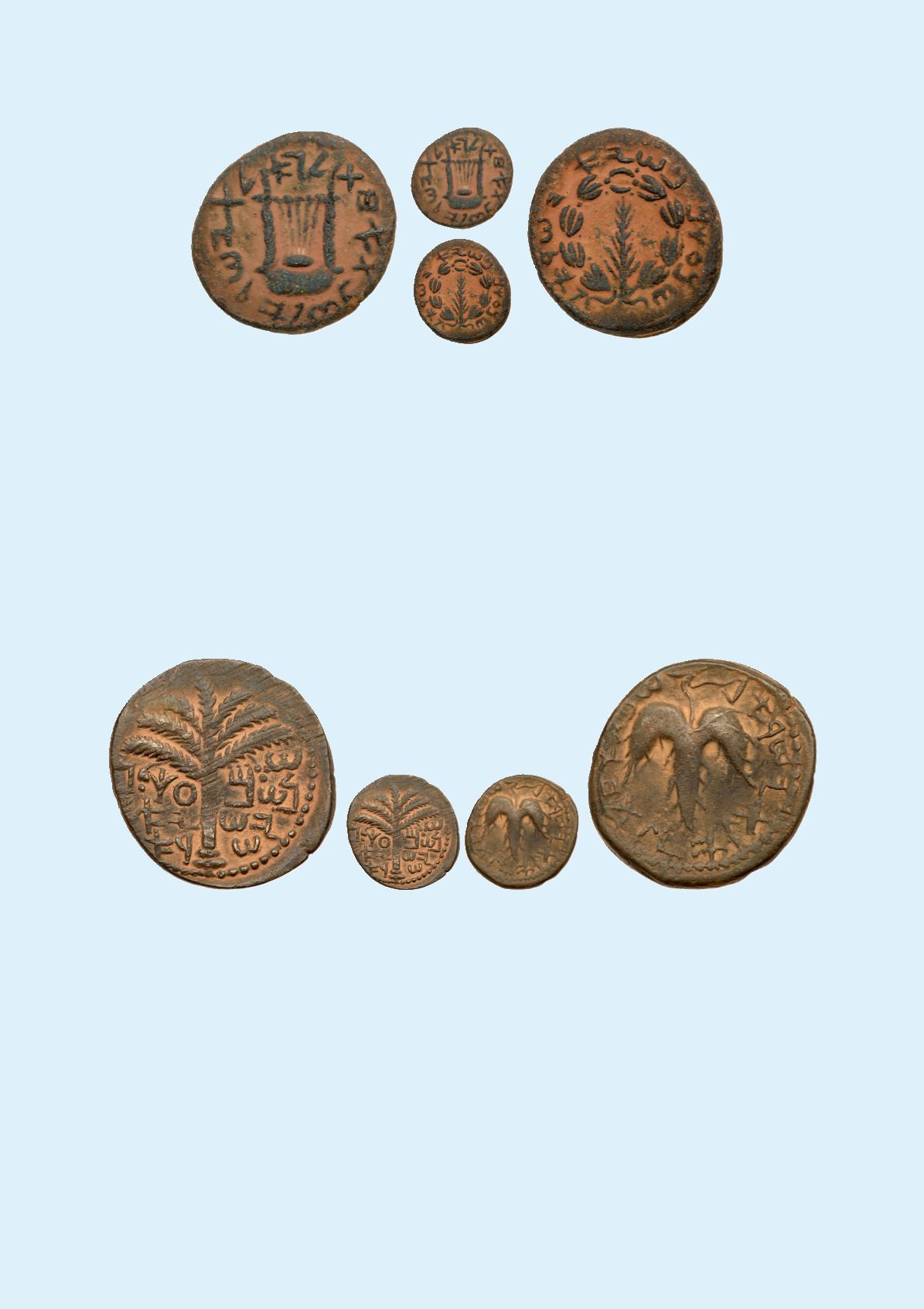

280
Judaea, Bar Kokhba Revolt. Æ Medium Bronze (10.33 g), 132-135 CE. Year 1 (132/3 CE). ‘Simon, Prince
of Israel’ (Paleo-Hebrew), palm branch within wreath. Rev. ‘Year one of the redemption of Israel’ (Pa-
leo-Hebrew), wide lyre with five strings. Hendin 1377; Mildenberg 26 (O1/R7); TJC 223. Dark earthen
patina. About Extremely Fine.
$1,500
From the Dr. Patrick Tan Collection.
The reverse type of this middle bronze denomination of the first year of the Bar Kokhba War is commonly identi-
fied as a nevel, a stringed instrument thought to have been similar to the Greek chelys. Although the kinnor - a related
instrument similar to the Greek kithara - was prescribed as an instrument to be played in the Jerusalem Temple, the nev-
el had an even more important status in some rabbinical Jewish traditions. It was said that the world was actually sung into
existence to the accompaniment of a perfect 22-stringed nevel. The reverberating notes of these strings subsequent-
ly became the 22 letters of the Hebrew alphabet. Considering the messianic flavor of the Bar Kokhba revolt one wonders
whether the nevel type alludes to a new creation for Judaea free from Roman oppression. The palm branch on the ob-
verse may perhaps celebrate the early victories of the Bar Kokhba rebels during “year one of the redemption of Israel.”
281
Judaea, Bar Kokhba Revolt. Æ Medium Bronze (10.94 g), 132-135 CE. Year 1 (132/3 CE). ‘Simon, Prince
of Israel’ (Paleo-Hebrew), seven-branched palm tree with two bunches of dates. Rev. ‘Year one of the
redemption of Israel’ (Paleo-Hebrew), vine leaf on tendril. Hendin 1378; Mildenberg 45 (O2/R10); TJC
222. Nice earthen-brown patina. Choice Very Fine.
$1,000
From the Dr. Patrick Tan Collection.
The vine leaf reverse of this middle bronze denomination of the first year of the Bar Kokhba War takes its in-
spiration from the prutot of the earlier failed Jewish Revolt (66-73 CE) that employed a similar type. In this way the Bar
Kokhba War was presented as a continuation of the earlier fight and lent it legitimacy in historical terms. The palm
tree was a symbol of Judaea going back at least to the time of the Jewish War since it regularly appears on Roman coins
in conjunction with Jewish captives under Vespasian and his successors. The seven branches consciously recall the sev-
en arms of the menorah, perhaps the Jewish symbol par excellence. The palm tree was also prominent on coins of
the Galileean city of Sepphoris, which became an important center of rabbinical Judaism after the Bar Kokhba War.



















